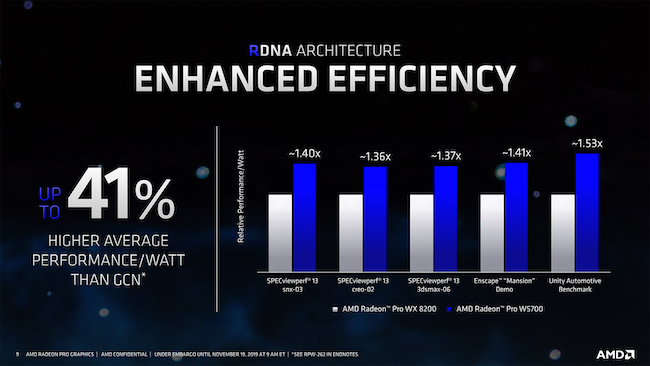
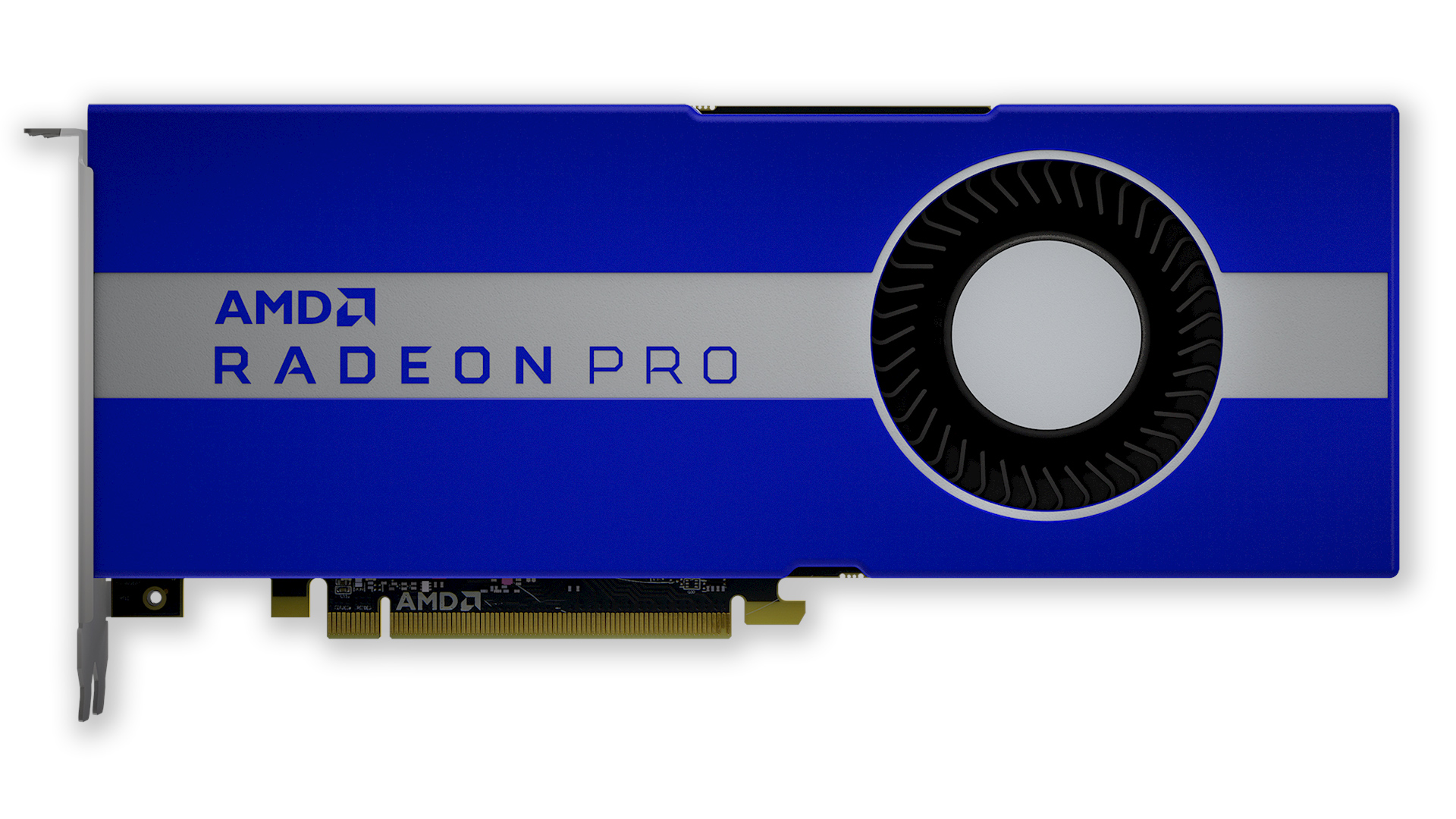
AMD has announced a new Professional graphics cards called Radeon Pro W5700.
You may think that model code bears a striking resemblance to the Radeon RX 5700 and you would be quite correct as Scott Jackson, Director of Workstations at AMD tells us “Moving forward professional and consumer model numbers will align” and that “Radeon Pro W5700 aligns with RX 5700”.
The specification of the W5700 confirms it is built on a 7nm process from TSMC and sports 2,304 Stream Processors in 36 Compute Units with 8GB of GDDR6 memory operating on a 256-bit controller. The choice of memory is a clear move away from the HBM2 used in Radeon Pro WX 8200 and will certainly help to cut costs.
AMD correctly claims the Pro W5700 is the ‘World’s first 7nm Professional PC Workstation graphics card’ however we know full well the consumer RX 5700 also uses 7nm and that some AMD server GPUs already run on 7nm technology.
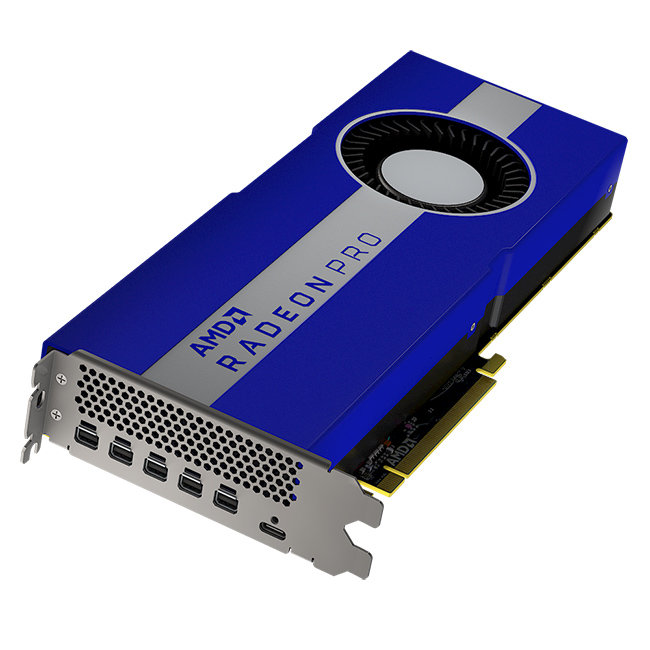
Clock speeds
AMD gives a range of clock speeds for the graphics core with a ‘Typical GPU speed of 1,630-1,880MHz’. AMD also cites a Peak FP32 Performance figure of 8.89 TFlops which falls mid-way between the figures for RX 5700 and RX 5700 XT so our best estimate is a sustained Boost clock speed of 1,800MHz.
The TDP of the Pro W5700 is rated at the same 185W as RX 5700 however this increases to 200W if you connect an output to the USB-C port that delivers up to 15W power and supports DP alt mode. AMD has included 8+6-pin PCIe power connectors. The other five graphics outputs are all Mini DisplayPort.
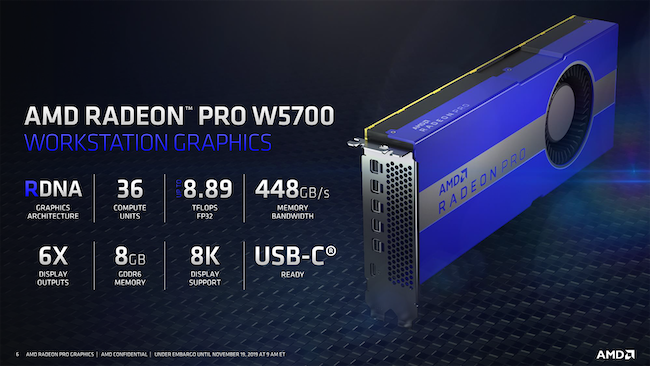
We note the images of the Pro 5700 are CAD renders that show a cooler that looks similar to the blower on the RX 5700. The way AMD handles clock speeds, power delivery and cooling in its Navi graphics cards means the cooler will not hurt performance, however a questionable cooler will lead to increased fan speeds and elevated noise levels. We assume the cooler used on the Pro W5700 will perform at least as well as the stock cooler on RX 5700 but rather hope it is more efficient.
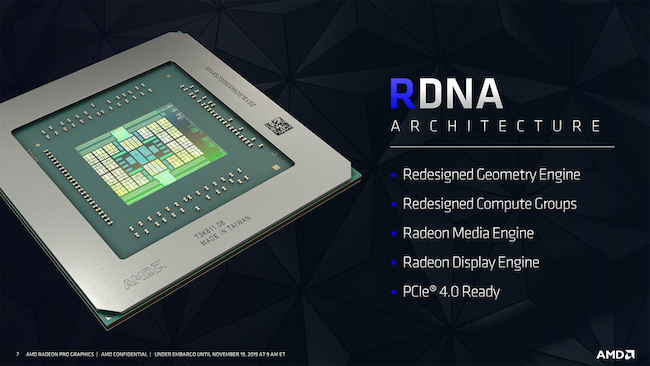
Competitors
AMD is directly comparing the Pro W5700 with Nvidia Quadro RTX 4000 which sells for around £999, so the price of US$799 is in the correct ballpark. Quadro RTX 4000 is based on the same GPU as RTX 2070 (rather than RTX 2070 Super) with 2,304 CUDA cores and 8GB GDDR6 so the specification is very similar to Pro W 5700. In both cases the price is approximately double that of the consumer version, which is what we have come to expect for Professional driver support.
Radeon Pro W5700 breaks new ground in the Professional market as it uses an architecture called RDNA (Radeon DNA) that launched in July 2019 with the 7nm Navi graphics chip. RDNA replaces the previous architecture GCN that dates back as far as January 2012. GCN stands for Graphics Core Next and is the type of name that starts to look elderly almost as soon it has launched, however AMD went through five versions of GCN before moving to RDNA so it has evolved behind the scenes.
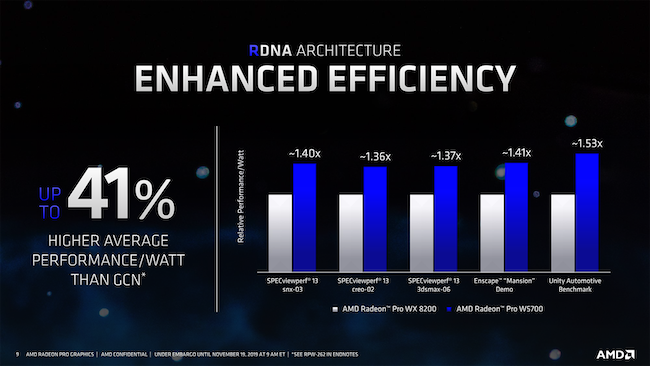
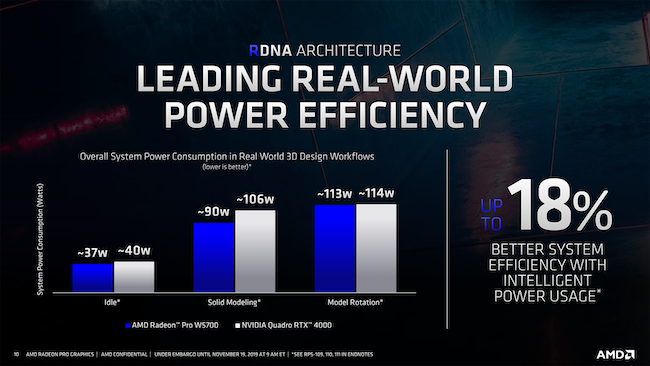
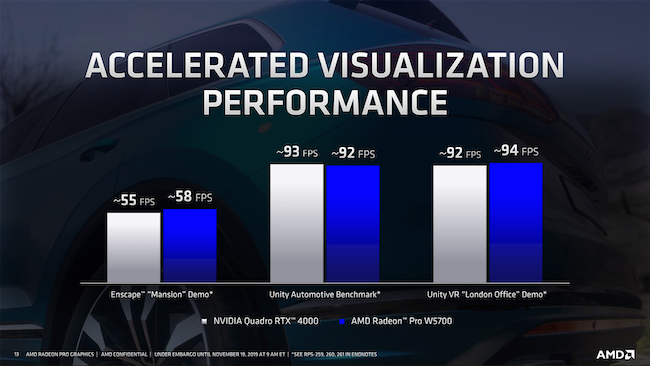
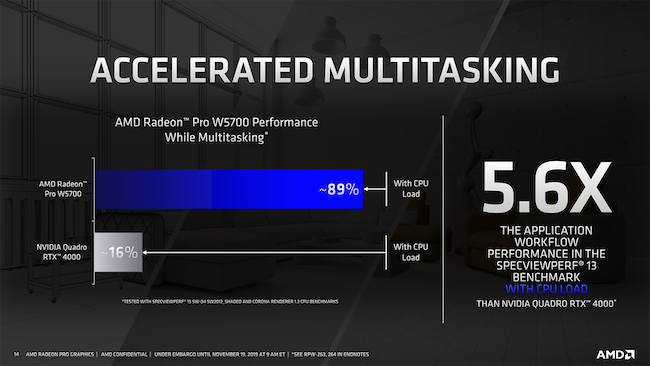
AMD claims that RDNA delivers a gain in IPC (Instructions Per Clock) of 25 percent over GCN. This is clearly a significant number however AMD backs up this claim by saying it is ‘the Geomean of 30 different games at 4K’. We have asked AMD whether they have data that relates to professional workloads and were told they were ‘Checking with HQ if we have any additional data to share.’
Radeon Pro W5700 sits towards the budget end of the Professional graphics market and based on our experience with Radeon RX 5700 we are confident that AMD’s new graphics technology will make a solid showing.
Tags: Technology


Comments